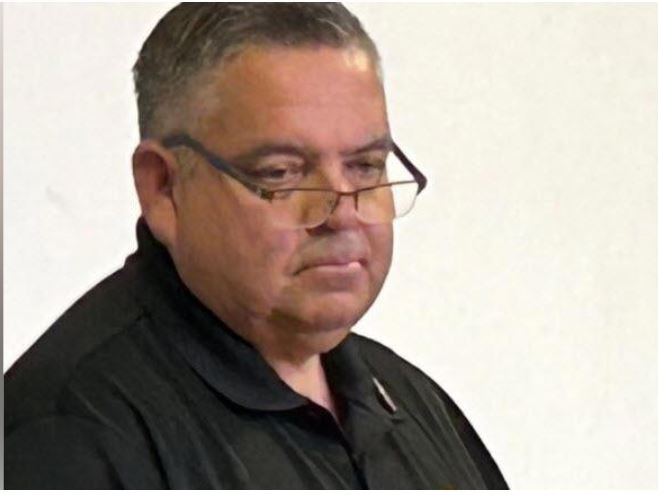- Home
-
News | Services
- CertificationEvidence Training & Certification Programs
- AccreditationAccreditation Guide & Resources
- Evidence News Top National & Global News
- NewsletterMonthly IAPE Email Newsletter
- Sponsors/AdvertisersAdvertisers & advertising options
- Job BoardView & Submit Job Listings
- Evidence Associations State Affiliates & Organizations
-
 ResourcesBooks | Manuals | Guides
ResourcesBooks | Manuals | Guides
- IAPE Forms & Professional StandardsForms | Standards Sample
- Manuals & GuidesSubmission | Packaging | & More
- DNA ResourcesJournal Articles & Law Enforcement Links
- Other ResourcesAudits | Digital | Best Practices
- Fentanyl ResourcesAudits | Digital | Best Practices
- Admin KillAdmin Approval to Purge Docs
- IAPE GalleryBest Practices From Agencies
- Fentanyl Resources & Guides
- Evidence by the book
- Evidence LogOnline IAPE Magazine
- Classes
- Membership
- About
- StoreIAPE Krapola
-
 Video ClassStudent Login
Video ClassStudent Login
Skull won't reveal secrets
1740 Hits
The Bradenton Herald (Florida)
BYLINE: RICHARD DYMOND;
Bradenton, FL

BRADENTON -- As cameras clicked inches from it and questions reverberated all around it, the mysterious human skull discovered at the Bradenton Police Department held tightly to its secrets Tuesday.
Hours after the Bradenton Herald published a story about a skull found in an unmarked box in the corner of its 12-foot by 12-foot homicide evidence room, the police department held a press conference Tuesday to satisfy a flood of interest.
The skull was discovered carefully wrapped in old newspaper in a box with the word "Skull" in caps underlined twice along with an FBI lab invoice.
The invoice read, "Examination of portion of human skull discovered in four inches of water near Bradenton on Sept. 28, 1974."
The lower half of the skull is missing with no jawbone and, hence, no teeth, remaining.
Investigators at the Bradenton Police Department had evidently sent the skull off for forensic testing, and the skull was mailed back, Oct. 21, 1974.
"We want to bring closure to some family out there still missing a family member," said Deputy Chief Bill Tokajer. "With new advances in technology, including DNA testing, we might now be able to solve the mystery."
Tokajer and Detective Lt. John Affolter believe the skull is that of a missing person and not connected to a Bradenton homicide. That's because they have homicide books on cases dating far earlier than the 1970s, and none involve a missing skull.
Following their hunch that the skull is from a missing person, the pair got clippings from old copies of the Herald and found about a dozen missing residents and missing tourists.
A promising lead, they think, is a man named Richard Cavenough who left on a Braden River fishing trip in 1971 and was never found, although his overturned boat was discovered.
Affolter termed "myth" a rumor that the skull belongs to an elderly man who wandered away from a nursing home.
"We have no evidence of that," Affolter said.
The officers say if someone can produce evidence of a missing family member from 1970 to 1974, they will embark on DNA testing.
"All we would need would be a hair from the present family member and DNA from the skull to see if there is a match," Tokajer said.
One thing is for certain: The mysterious skull stirs the imagination.
For an hour, Tokajer and Affolter fielded roughly 50 questions from curious media members.
"Was the skull an adult?"
"Yes, we think so," Affolter said.
"Do you know the sex?"
"No," the officers said.
"Could it be the skull of a Native American?"
"It seems unlikely that it would be found right in the water if it were," Tokajer said. "But we plan on doing carbon dating."
"Do you know what body of water it was found in?"
"No," Affolter said.
"Wasn't there a story in the local papers about a skull found in 1974?"
"Not that we could find," Tokajer said.
"Does the Bradenton Police Department have any records of the skull?"
"Our records go back to 1978," Tokajer said.
"Why did you just find it Thursday?"
"It wasn't missing," Tokajer said. "It was part of our inventory, which is roughly 12,000 pieces. We decided we needed to get our detectives on some cold cases, and that is when it was found."
Richard Dymond, Herald reporter, can be reached at 748-0411, ext. 6686.
- - - - - - - - - - - - - - - - - - - - - - - - - - - - - - -
International Association for Property and Evidence
"Law Enforcement Serving the Needs of Law Enforcement"
www.IAPE.org
BYLINE: RICHARD DYMOND;
Bradenton, FL

BRADENTON -- As cameras clicked inches from it and questions reverberated all around it, the mysterious human skull discovered at the Bradenton Police Department held tightly to its secrets Tuesday.
Hours after the Bradenton Herald published a story about a skull found in an unmarked box in the corner of its 12-foot by 12-foot homicide evidence room, the police department held a press conference Tuesday to satisfy a flood of interest.
The skull was discovered carefully wrapped in old newspaper in a box with the word "Skull" in caps underlined twice along with an FBI lab invoice.
The invoice read, "Examination of portion of human skull discovered in four inches of water near Bradenton on Sept. 28, 1974."
The lower half of the skull is missing with no jawbone and, hence, no teeth, remaining.
Investigators at the Bradenton Police Department had evidently sent the skull off for forensic testing, and the skull was mailed back, Oct. 21, 1974.
"We want to bring closure to some family out there still missing a family member," said Deputy Chief Bill Tokajer. "With new advances in technology, including DNA testing, we might now be able to solve the mystery."
Tokajer and Detective Lt. John Affolter believe the skull is that of a missing person and not connected to a Bradenton homicide. That's because they have homicide books on cases dating far earlier than the 1970s, and none involve a missing skull.
Following their hunch that the skull is from a missing person, the pair got clippings from old copies of the Herald and found about a dozen missing residents and missing tourists.
A promising lead, they think, is a man named Richard Cavenough who left on a Braden River fishing trip in 1971 and was never found, although his overturned boat was discovered.
Affolter termed "myth" a rumor that the skull belongs to an elderly man who wandered away from a nursing home.
"We have no evidence of that," Affolter said.
The officers say if someone can produce evidence of a missing family member from 1970 to 1974, they will embark on DNA testing.
"All we would need would be a hair from the present family member and DNA from the skull to see if there is a match," Tokajer said.
One thing is for certain: The mysterious skull stirs the imagination.
For an hour, Tokajer and Affolter fielded roughly 50 questions from curious media members.
"Was the skull an adult?"
"Yes, we think so," Affolter said.
"Do you know the sex?"
"No," the officers said.
"Could it be the skull of a Native American?"
"It seems unlikely that it would be found right in the water if it were," Tokajer said. "But we plan on doing carbon dating."
"Do you know what body of water it was found in?"
"No," Affolter said.
"Wasn't there a story in the local papers about a skull found in 1974?"
"Not that we could find," Tokajer said.
"Does the Bradenton Police Department have any records of the skull?"
"Our records go back to 1978," Tokajer said.
"Why did you just find it Thursday?"
"It wasn't missing," Tokajer said. "It was part of our inventory, which is roughly 12,000 pieces. We decided we needed to get our detectives on some cold cases, and that is when it was found."
Richard Dymond, Herald reporter, can be reached at 748-0411, ext. 6686.
- - - - - - - - - - - - - - - - - - - - - - - - - - - - - - -
International Association for Property and Evidence
"Law Enforcement Serving the Needs of Law Enforcement"
www.IAPE.org
How do you feel about this post?
Search IAPE
Blotter - Latest News
Ohio is in the news again!
Breaking News: Ashville Police Chief Placed on Suspension Amid Allegations of Theft July 18th, 2024 Ashville, OH – In a shocking turn of events, Ashville Police Chief Jeff George was walked out of the...
Defendant is the third officer sentenced in the scheme
Former Boston Police Officer Sentenced for Overtime Fraud Scheme July 10th, 2024 BOSTON – A former Boston Police officer was sentenced today in connection with an investigation of overtime fraud at th...
Another Police Chief in TROUBLE!
Ohio BCI investigates after police chief fired, audit finds 'money missing from evidence room' 07/12/2024 NEW MIAMI, Ohio (WXIX) - A state law enforcement agency launched an investigation this week at...
News By Region
BC
(16)
District of Columbia
(22)
Northeast
(962)
Connecticut
(31)
Delaware
(7)
District of Columbia
(22)
Maine
(15)
Maryland
(38)
Massachusetts
(126)
New Hampshire
(26)
New Jersey
(34)
New York
(88)
Pennsylvania
(140)
Rhode Island
(12)
Vermont
(22)
Southeast
(1191)
Alabama
(49)
Arkansas
(30)
Florida
(172)
Georgia
(59)
Kentucky
(47)
Louisiana
(91)
Mississippi
(8)
North Carolina
(78)
South Carolina
(48)
Tennessee
(64)
Virginia
(47)
West Virginia
(35)
Southwest
(513)


